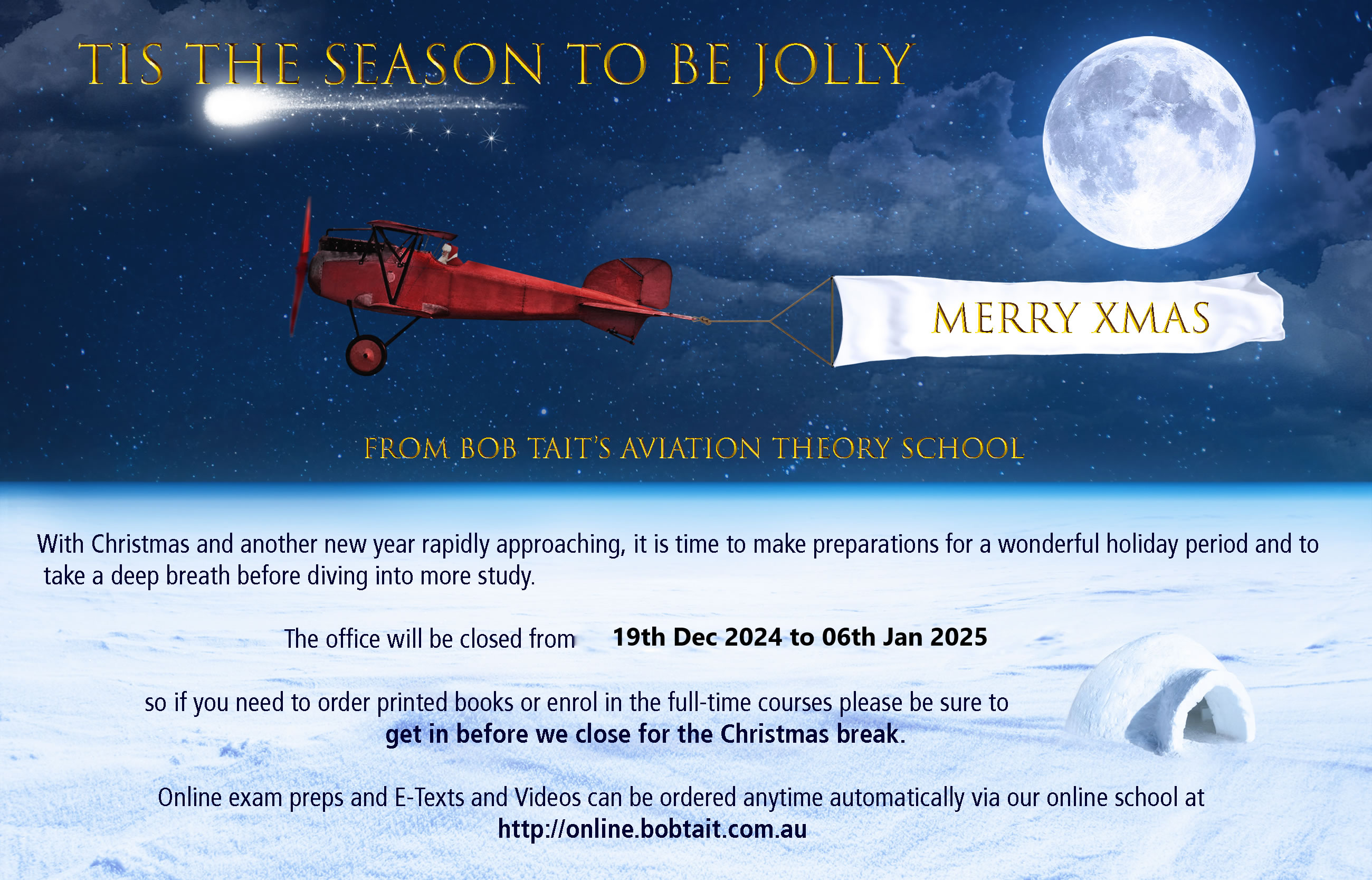G'day all,
Just wanted to debrief all readers re my penultimate CPL exam, the CNAV - which I comfortably finished this morning and scored 76%.
To be honest, I was a tad bit dejected with 76% - this was certainly one exam (apart from CADA) where I went in guns blazing, thinking it would be an easy high-score but I guess CASA's surreptitious word-play coupled with some very silly mistakes on my part might have cost me some easy marks. But, a pass is a pass, and in the spirit of serving the BT Forum community, here are my key takeaways and tips:
- As always, Bob Tait's books are the way to go - There's also an additional workbook as part of the subscription package. Make sure you attempt the questions within the workbook as it will definitely give you an edge once you're confident with the more complex 1 in 60 questions,climb/descent/CTA step calculations and fuel planning - speaking of which;
- My question-bank consisted of 32 questions, consisting of 1 and 2 mark questions. The questions were a mix of nearly every topic from the book. Instead of the questions being skewed/weighted towards a large number of 1 in 60 questions, I had a near equal set of everything - from CAS/TAS calculations, xwind calculations, to CTA step navigation, circa 4 or 5 simple and complex 1 in 60 questions and basic and advanced fuel calculations. I was also asked two questions based on the PCA (identifying the Flightwatch frequency) and identifying which GAF to use from Swan Hill to Canberra). The other chart based questions were from the Sydney WAC (a complex 1 in 60 based on diverging tracks) and the Hobart VTC (identify a location where terrain is higher than CTA LL).
Also, pay close attention to the units of measurements as this is what can easily trap you into entering the correct answer but in the wrong units - thereby costing you valuable and easy marks. Oh and don't forget to be confident with BOD/EOD calculations - I was asked 4 questions on these!
- The 1 hour 45 min time limit is more than sufficient. I did one revision and thought it was good enough. But my recommendation is to do multiple revisions if time permits so you can iron out any careless errors and score a higher mark.
- CNAV is NOT hard per se, when you compare it with Performance or even Air Law (which can be a challenge due to the 80% pass mark and constrained time limit) but it is VERY easy to make silly mistakes. The key is to keep practising the quant questions and read the bits which involve a lot of theory (such as understanding Conical/Mercator projections, latitudes and longitudes and differences between geographic and magnetic poles etc). Personally, given that I had already completed CFPA and CALA before I attempted CNAV, it helped me sail through revision of things like Pressure Heights, Transition Levels and fuel planning. So my recommendation is to attempt CFPA-CALA-CNAV, in that order.
- Lastly, Bob Tait's text contains a chapter at the end that deals exclusively with Navaids. This is an excellent chapter to understand basic instrument flying and concepts around GPS - I actually found it a near identical copy of the first two chapters within the IREX book. A good read of this chapter sets you up neatly for the more chunkier parts of IREX. I was asked only one question re the VOR but as everyone gets different question banks it is like you could be asked questions surrounding T.E. and Drifts using ADF's.
Hope this helps - now onwards to the final one - CAGK!
Cheers,
HK







